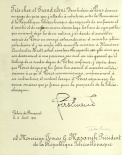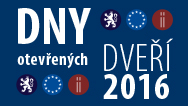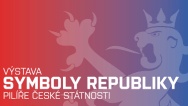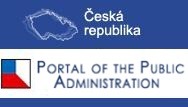Exhibitions
10. 5. 2010
Exhibition in the Hrzán Palace 12 May - 19 May 2010
The Office of the Government of the Czech Republic in cooperation with the Embassy of the Republic of Romania, the Romanian National Bank, the Romfilatelia and the Archives of the Ministry of Foreign Affairs organize this exhibition as a commemoration of the 90th anniversary of establishing diplomatic relations.
The exhibition will present the history of mutual contacts between the Czech Republic and the Republic of Romania and their reflections in the area of numismatics and philately. The exhibition is held under the auspices of Daniela Gitman, Ambassador Extraordinary and Plenipotentiary of Romania to the Czech Republic.
Information on the Exhibition
The exhibition will be open to the public from 12 May to 19 May 2010 in the premises of the Hrzán Palace, Loretánská Str. 177/9, Prague 1, from 10 o'clock to 18 o'clock
Free admission.
Historical Context
Mutual relations between Czechs and Romanians, the history of which dates back to the medieval time, significantly changed conditions before the World War One. Romania jointed the Allies of World War and that is why it it became a natural ally for the Czechoslovak National Council. Mutual contacts were at the political level – in 1917 Masaryk was welcomed in Romania as if he were a head of the state – and also at the military level when Czechoslovak soldiers operated in the Romanian troops and Romanian soldiers in the Czechoslovak ones. Romanian soldiers who constituted an important part of the Prague garrison also directly influenced the formation of the independent state when they refused their obedience to the Austrian command during October 1918 and they defected to the side of the National Committee.
After the end of the war there were voices from both states calling for immediate establishing diplomatic relations. However this was hampered by mutual disputes over frontier line in the territory of the Carpathian Ruthenia. Finally the problem was solved by the mutual exchange of territories. Mutual diplomatic relations were finally established by the official exchange of ambassadors in 1920.
However in the meantime, at the peace conference in Paris, the political leaders of both states started to negotiate on the issue of mutual political and military treaty which was primarily focused against Hungary and its plans for the re-establishment of the integrity of the Hungarian Kingdom. Romania hesitated at first to assent to the formation of such an alliance and posed several claims. For the formation of the alliance finally contributed the attempts of the ex-Emperor Charles to re-establish his reign over Hungary. The treaty was finally signed in April 1921.
This treaty continued the treaty between the Czechoslovak Republic and the Kingdom of Serbs, Croats and Slovenes and was extended by the treaty between Romania and the Kingdom of Serbs, Croats and Slovenes. Thanks to this a tripartite alliance was formed which was also called the Little Entente. In 1920' it became a mainstay of the foreign policy of the states concerned. However in the following decade its importance was gradually deteriorating. Economic problems which were caused by the Great Depression and the growth of Germany power in the territory of the Central and South-East Europe devalued the importance of the alliance. The individual states had to take the real state of the foreign relations into consideration and tried to ensure utmost integrity of theirs. The Little Entente was losing its importance because of its anti-Hungarian orientation. The most threatening factors were especially Germany, Italy and the Soviet Union; not Hungary. Romania was threatened in particular from the side of the Soviet Union and was seeking support mainly in Germany. Czechoslovakia, on the other hand, was threatened by Germany and was seeking support mainly in the Soviet Union. Friendly relations in the framework of the Little Entente have brought number of stimuli for mutual economic, cultural and scientific contacts. Czechoslovak Republic exported to Romania lots of industrial products, in particular machinery, textile and arms, while Romania exported mainly raw materials and oil.







